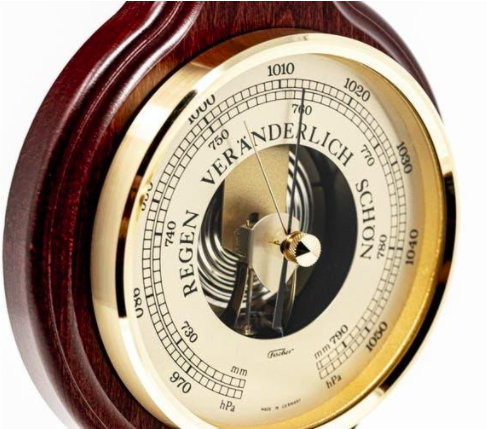With our forebears mostly being involved in agriculture (Tasmania), there was always a keen interest in the weather and forecasting and when relatives or friends got together it would not be long before the conversation got round to the weather.
Now day forecasting has become fairly accurate in the short term and with the features of “el-nino” and “la-nina” becoming more understood and their relationship to weather patterns, conditions over a period of several months ahead can also be fairly accurately predicted. The accuracy in forecasting has also been helped by a grid of satellites, an increased number of land-based weather stations and ocean buoys, balloons, as well as reports coming from aircraft and shipping.
However in the past there were fewer of these aids and with information reaching our forebears also much less and slower in being received, consequently, earlier generations had to rely on local observations as a guide to expected weather conditions. Most families had a barometer and when the air pressure was falling, wind and rain could be expected, with a rising barometer indicating fine weather.
Several indicators coming from nature were also a guide to conditions that could be expected in the short and long term. Some of these were-
- a rainbow at night the shepherd’s delight but a rainbow in the morning the shepherd’s warning
- evening red and morning grey speeds the traveller on his way but evening grey and morning red brings showers down upon his head
- a halo around the moon will pass away soon, but a halo around the sun will bring water in the ton
- rain before seven, fine before eleven
- if a cock crows at night he will wake with a watery head.
It would seem that some creatures in the animal kingdom were also perceptive to coming changes in the weather and our forebears also accepted their reactions as reliable. Croaking frogs and the swarming of gnats was a sign that rain was coming as also when dry springs began to run. When the black swans were seen leaving the open lagoons and heading for shelter in the mountains, rough weather could be expected.
For longer-term forecasting a few indicators were considered to have some reliability, such as
- a good wattle blossoming indicated a good wheat harvest
- a heavy setting of hawthorn berries indicated a coming harsh winter
- water nesting birds would build their nests to be above high water mark – in wet years the nests would be higher than in dry years.
Grandfather, John Page, was a keen observer of the weather and could fairly accurately forecast the weather for two or three days ahead. In doing this in the late afternoon he would check the height of the cloud cap around Dry’s Bluff. He frequently stated that the weather seemed to operate in seven-year cycles.
A working paper 02/01/02 – Ivan Badcock

